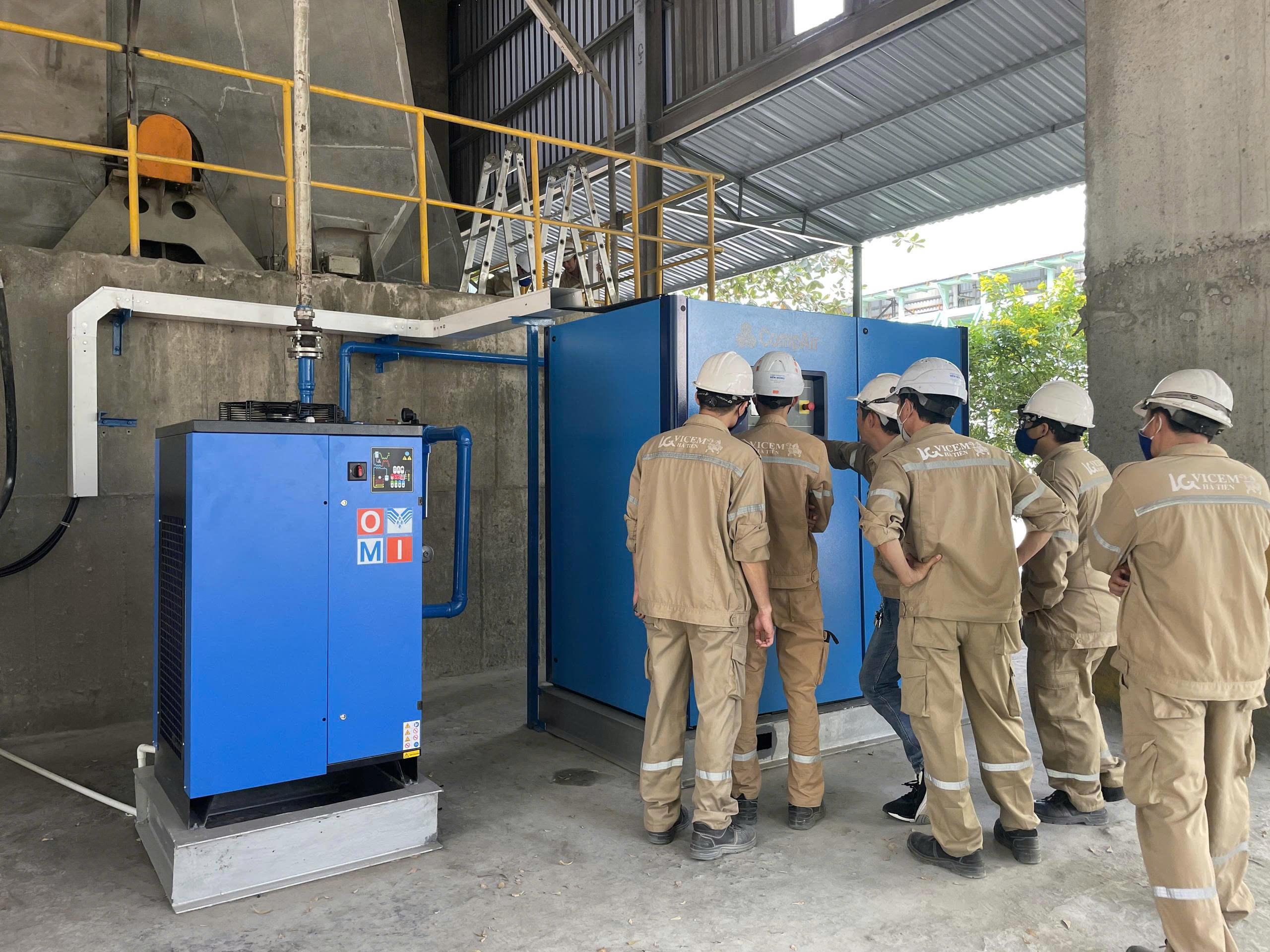Comprehensive Guide to Choosing the Appropriate Screw Air Compressor Capacity

The air compressor is the "heart" of all industrial production activities, supplying a clean and powerful energy source for a range of equipment from automation machinery to hand tools. However, selecting the appropriate capacity (also known as compressed air flow rate) for a screw air compressor is a strategic decision that directly affects the operating efficiency and long-term electricity costs of the business. Incorrect selection can lead your factory to face pressure shortages or waste tens of millions of VND in electricity costs every month.
1. The Importance of Accurate Compressed Air Capacity Determination
The capacity of a screw air compressor is measured by its output compressed air flow rate (usually cubic meters/minute - or Liters/minute - ) at a specific pressure level (e.g., 7.5 bar or 10 bar). Incorrect selection leads to the following consequences:
- Compressed Air Shortage (Under-sizing): The system pressure is unstable, constantly dropping below the equipment's requirement, leading to reduced production speed, faulty products, and disrupting the entire assembly line. This is particularly serious for machinery with high peak air demand.
- Energy Waste (Over-sizing): A machine with capacity greater than the actual demand must frequently operate in inefficient Idle or Load/Unload modes. Note that electricity consumption accounts for approximately 70-80% of the total operating cost of an air compressor over 10 years. Optimizing capacity is the key to energy savings.
2. Detailed Method for Calculating Required Compressed Air Flow Rate
2.1. Inventory and Documentation of Each Equipment's Requirement
This is a fundamental but extremely crucial step. You need to create a detailed table for every point of compressed air usage in the factory:
- Equipment Name: (e.g., Packaging Machine, Paint Spraying Robot, D100 Air Cylinder, Pneumatic Hand Tool...).
- Nominal Consumption Flow Rate (Q nominal): Taken from the equipment manufacturer's technical specifications (catalog) (e.g., 1.5 cubic meters/minute at 7 bar pressure).
- Required Pressure (P required): The minimum pressure level for the equipment to operate normally (usually 5 - 7 bar).
2.2. Applying the Usage Factor and Aggregating Flow Rate
Not all equipment operates 100% of the time. A usage factor (k - Load Factor) must be applied to calculate the actual requirement:
Formula for Actual Flow Rate per Equipment: Q actual = Q nominal x k (Usage Factor)
Formula for Total Current Flow Rate: Q total current = Sum of (Q actual) x k total (Simultaneous Factor)
Where, k total is the Simultaneous Factor. For factories operating continuously in 3 shifts, the total factor k total can range from 0.7 to 0.9. However, if the demand fluctuates greatly, direct measurement using a flow meter will yield the most accurate results.
2.3. Calculating Contingency and Loss Factors
To ensure the reliability and scalability of the compressed air system, contingency factors must be added:
- Leakage Loss: The compressed air piping system always has leaks, which is the biggest cause of waste. Depending on the age and quality of the piping, an additional 15% to 25% of the total flow rate should be added to compensate. Checking and addressing leaks is an important maintenance task.
- Expansion Contingency: To meet growth demand over the next 3-5 years or plans to purchase additional machinery, add 10% - 15% reserve capacity to the final total flow rate.
The Final Required Flow Rate (Q final) will be the basis for selecting your screw air compressor capacity.
3. Choosing the Optimal Air Compressor Technology
After determining the necessary flow rate, the next step is to choose the right air compressor technology for your factory's operating model.
3.1. Fixed Speed Air Compressor
This type of machine operates at a fixed motor speed (100%). They are an excellent choice for applications with very **stable compressed air demand**, running continuously 24/7 with a high load (over 80% capacity). The advantage is lower initial investment cost.
3.2. Variable Speed Drive (VSD) Air Compressor
VSD air compressors are equipped with an inverter, allowing the motor to adjust its rotation speed to produce the exact amount of compressed air needed by the factory at any given time.
Key Benefits of VSD machines:
VSD machines help save up to 35% electricity compared to fixed-speed machines when compressed air demand fluctuates frequently (Load Factor below 70%). This is the optimal solution for most modern factories, ensuring a fast return on investment.
At Quoc Thinh Industrial, we specialize in supplying and installing genuine VSD solutions from reputable brands like DEMAN. We provide specialized equipment-based compressed air demand analysis services to help you choose the correct model, ensuring maximum performance.
4. Conclusion and Recommendations
Selecting the capacity of a screw air compressor is not just a technical issue but also an economic one. Investing correctly from the start will help you save huge operating costs over many years. Don't rely solely on experience or guesswork; perform a thorough inventory, calculate the factors, and consider VSD technology if your compressed air demand fluctuates.

 VN
VN
 EN
EN





